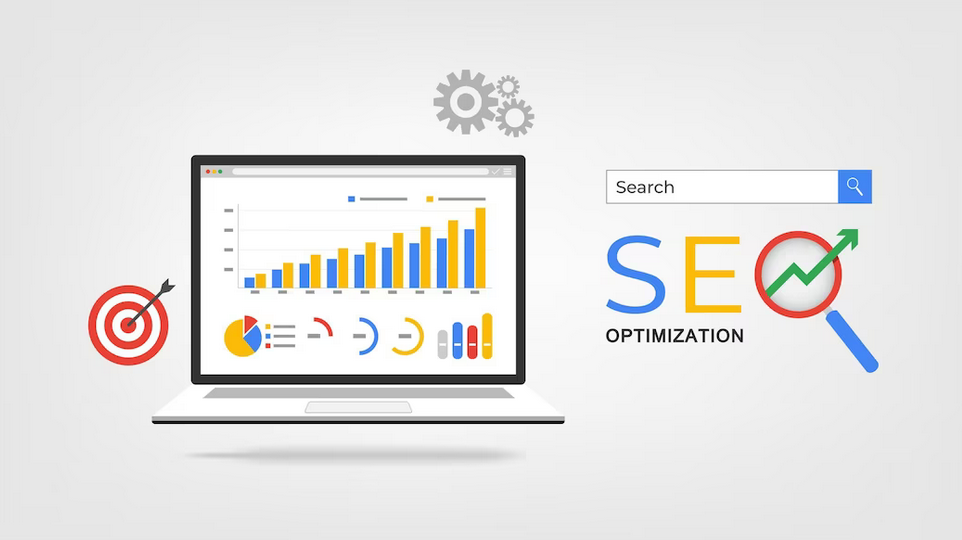Getting more traffic to your e-commerce store is crucial for your business success. However, it can be hard to boost clicks and attract more visitors to your website. E-commerce Search Engine Optimization (SEO) is an effective marketing method that helps your store rank higher on search engine results pages (SERPs). In this article, we explain what e-commerce SEO is, how it works, and how to create a strategy.
What Is E-Commerce SEO?
E-commerce is the online trading of goods and services, as well as the transfer of money and data. It enables online shopping and selling. E-commerce SEO is a way to increase your store’s exposure in search engines like Google. When shoppers search for a certain product or service, they usually click on the top results, so the higher you rank, the more traffic and sales you get.
To improve your ranking with e-commerce SEO, you can use an organic approach, instead of a paid one. It involves many methods that you can do yourself, such as improving headlines and pages, creating links, testing loading speeds, and using keywords.
Why E-Commerce SEO Is Important
E-commerce SEO helps you grow your audience and visibility without spending too much. Lately, product-related research keywords have risen by 30%, which shows that more buyers are doing online research before they buy.
Whatever you are selling, an optimized e-commerce website can boost your ranking in the search results. This matters because most customers only look at the first page of search engine results and don’t like to scroll too much.
Read also:
How to boost your ecommerce sales with these 30 marketing tactics
How To Develop an E-Commerce SEO Strategy
You can probably create an e-commerce SEO strategy by yourself. It takes some time to set up the strategy, but after that, you can reap the long-term rewards for your business. Here are the steps to create an e-commerce strategy for your business:
Keyword Research
Keywords are the terms that people use in search engines to look for information on products or services. Keyword research is finding out which terms your target audience is using when they are looking for the products or services you offer. For instance, if your e-commerce store sells organic dog treats, your target audience might be searching for “best organic dog treats” or “high-quality organic dog treats.”
Here are three steps to performing effective keyword research:
Make a List of Keywords
To find the best keywords for your business, first, write down the words and expressions that match your products or services. Then, think of the terms and queries that your potential customers would use to search for them online.
Find the Best Options
After making your lists of keywords, you need to find out which ones are the most effective and popular. You can do this by entering words in a search engine and checking the results, or by using a keyword research tool. Google has a Keyword Planner that you can use for free, but you have to create an account first.
Note Your Competitors’ Keywords
The chances are high that your competitors are also optimizing their e-commerce websites for SEO and, since you have the same target market, you will probably use the same or very close keywords. Search for the best keywords that you identified and see which websites appear first. Observe what words they are using and make sure to include some of the same keywords on your site.
Site Development
The websites that provide the best user experiences are the ones that Google and other search engines rank higher in the SERPs. Developing a high-quality e-commerce website is essential for creating those top user experiences, which attract more visitors and, consequently, more customers.
Well-developed sites all contain these components:
- User-friendly interface: This is a fancy way of saying that your website is easy to navigate. Customers want the e-commerce sites they visit to follow a logical browsing pattern, provide the information they need, and feel inviting.
- Optimized for mobile: The overwhelming majority of your target audience will be doing at least some of their browsing from a mobile device. As such, your interface needs to adapt seamlessly to all different types of screens and browsers.
- Strong security: Consumers want to know their information is safe when shopping online, so having a strong security system in place is vital to your website development. You’ll want to have antivirus and anti-malware software in place, as well as programs that authenticate and encrypt links.
- Fast-loading pages: People are not patient, and that’s especially true when it comes to waiting for websites to load. Having a fast-loading website helps with Google algorithm ratings and improves SERP rankings.
On-Page SEO
On-page SEO is the practice of improving your website’s pages to boost their ranking in SERPs. Search engines rapidly analyze the content of web pages to make sure that they match the user’s query. This technique, also called on-site SEO, aims to help both search engines and potential customers find and comprehend the pages that are the most suitable for their needs.
These are the elements that your on-page SEO should focus on:
Keywords
Now it’s time to apply the results of your keyword research. After choosing the best keywords and expressions for your niche, start placing them wisely on the appropriate pages of your website.
HTML Components
HyperText Markup Language (HTML) gives the meaning and shape of your web content. The specific words and expressions that you use in your page titles, meta descriptions, headers, and page URLs make it easier for users to find what they need.
Visual Content
Most websites benefit from images and graphics, as they make the content more attractive and easier to read. Scannable content appeals to consumers and increases their engagement with the brands that use it.
Site Architecture
Site architecture is the way a website is designed and arranged. It includes the product pages, category pages, and links that make up your site. Your home page is the most important page on your site, and every other page should be easy to reach from it in three clicks or less.
Link Building
The content and the links of a website are the factors that Google uses to rank it. An e-commerce SEO strategy needs to have high-quality links, as they show credibility, which then improves your position in the SERP.
These are some of the best ways to build links on your website:
Research Your Audience’s Interests
When you have identified your target audience, you need to know what websites they visit and who they trust as authorities. Look for the websites they use often and include relevant links from them. The important thing is to use these links wisely, in a way that can help your prospects get more information.
Create Great Content
Quality content has many advantages, such as attracting links from other websites to your work. You can build trust and show your expertise by knowing your target audience and creating blog posts or infographics that address their problems or answer their queries.
Make Connections
After you know where your audience hangs out and you have made your great content, you need to reach out to those other businesses. Send them brief, friendly messages via email or social media to start a conversation. Tell them about the content you have and kindly request if they would like to share it.
E-Commerce SEO Tools for Beginners
SEO has many benefits, such as the availability of free tools and advice. Your time is the main cost, but you can usually save money on the budget.
These are some of the top e-commerce SEO tools for beginners:
Keyword Tool is an online keyword research site that generates hundreds of relevant keywords for any topic. The free account version provides lists of recommended keywords for search engines, social media platforms, and sites such as Amazon.
MozBar, a free extension you can install on Google Chrome, offers metrics including Page Authority, Domain Authority, and Spam Score of any site or page. Users can access and compare link metrics across pages while viewing any SERP.
Domain Overview is a tool from Semrush that provides a range of metrics about a domain’s online visibility and growth trends over time. Users can register and then look up 10 competitors for free, which will provide important SEO insight.
Site Audit, also from Semrush, is an SEO analysis tool that lets users research up to 100 URLs for free, which is ideal for examining competitors as well as your site. You can crawl and check every page for errors, notices, and warnings, and make fixes as needed.
Keyword Rank Checker is provided by Ahrefs and lets you see where your keywords rank. Each keyword you search is examined by a massive database, which then gives you information about search volume, ranking position, Keyword Difficulty (KD), estimated organic traffic, and ranking URL.
Ubersuggest is a tool that offers several different pieces of SEO information, including keyword suggestions, domain overview, content ideas, and backlink data. You get three free searches daily or can upgrade to more searches with a subscription.
Conclusion
E-commerce SEO is still an important way to boost your site’s position in SERPs. Investing time in creating a strong SEO base will help your business in the present and the future. Besides better rankings, you will also improve your exposure, credibility, and traffic.
Getting started with e-commerce SEO is not easy or clear-cut, but the benefits are much greater than the work required. Also, once you have the SEO components ready, it’s simpler to make minor changes over time.





Leave a Reply